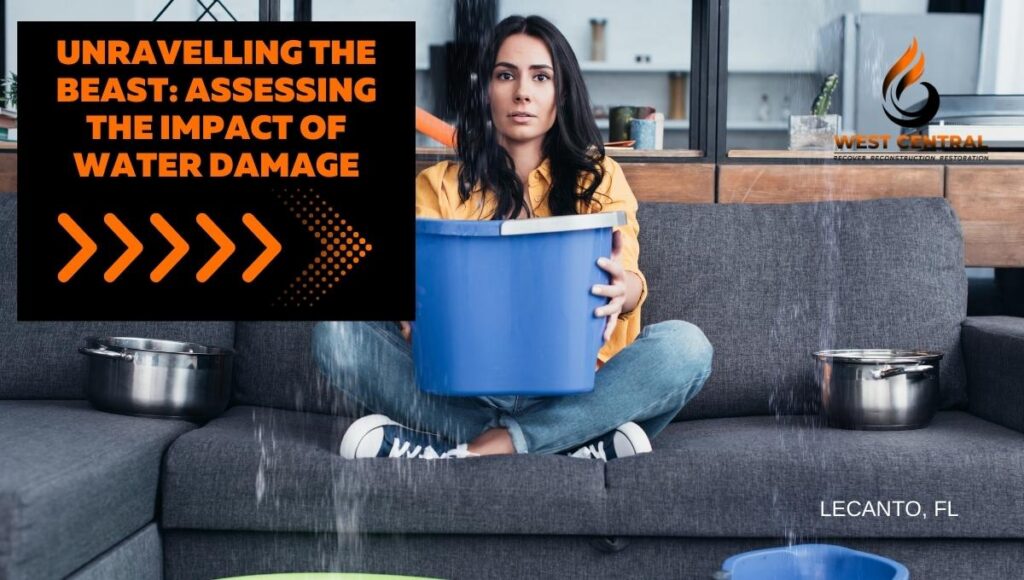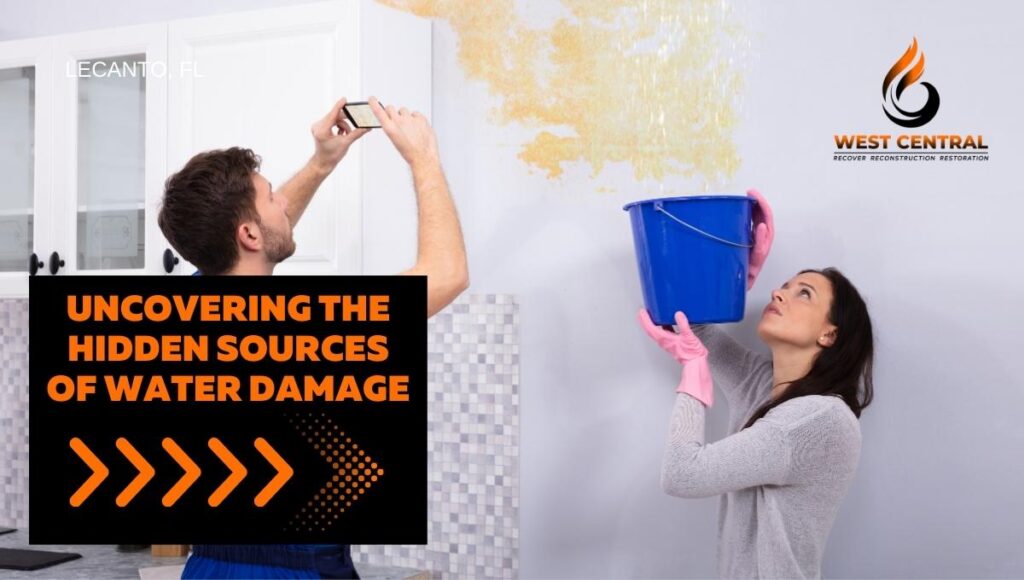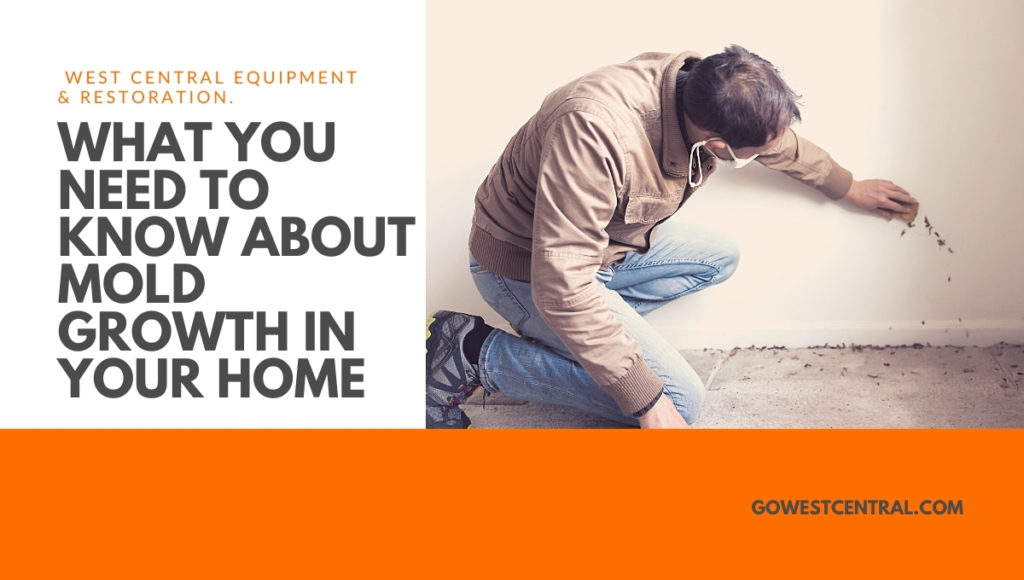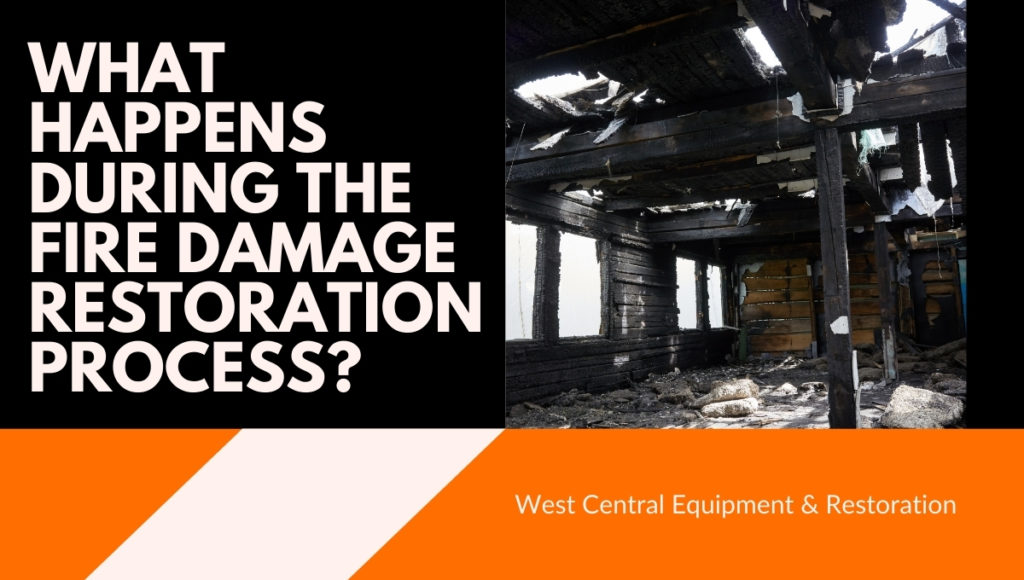A sudden break or obstruction to the flow of wastewater from your home can be disastrous.
Whether it is due to a broken pipe or a clog in the pipeline, it would lead to the wastewater flowing back up into your home instead of flowing to the community sewer system.
Your home can be quickly overwhelmed with fetid water, bacteria, waste, and other dangerous and unpleasant elements in the sewage.
Need for immediate cleanup
Sewage flooding poses serious health risks to both humans and animals. It is critical to clean up the water immediately.
However, while you can tackle minor sewage flooding on your own, massive or widespread flooding comes with several risks that make it not DIY(do-it-yourself)-friendly.
At West Central Equipment and Restoration in Lecanto, Florida, we discourage homeowners from attempting a DIY sewage cleanup because of the dangers it presents.
What are the risks of a DIY sewage flood cleanup in your home?
1. Sewage is contaminated and harmful
Sewage tends to consist of hazardous materials. Typical sewage may comprise greywater, which is water from utilities like sinks, showers, tubs, and dishwashers. It may also contain human waste since the water used to flush toilets often ends up in sewage. It is unhygienic and unsafe to come into contact with sewage without following proper procedures and wearing personal protective equipment (PPE).
2. Potential exposure to pathogens
Sewage contains up to a million microorganisms per millimeter of waste. Though some organisms help break down the solid waste, others are pathogenic parasites, bacteria, and viruses that professionals are trained to safely clean up.
For instance, sewage may contain pathogenic parasites such as Entamoeba histolytica that causes amoebiasis, Giardia lamblia that causes giardiasis, and Cryptosporidium that causes various symptoms including stomach pain, diarrhea, vomiting, nausea, and dehydration.
Sewage may also contain Escherichia coli, Salmonella, and Pseudomonas aeruginosa, resulting in intestinal diseases, typhoid fever, dysentery, and cholera.
Additionally, sewage can contain viruses such as Polio, Hepatitis A, Adenovirus, Encephalitis, and enteric cytopathic human orphan (ECHO) that pose serious health risks.
3. Higher cleanup costs
You may think it is more cost-effective to clean the sewage backup yourself, but DIY is actually more expensive that you may imagine. When you put together the equipment, disinfectant, and cleaning supplies needed to complete the job thoroughly, the cost of DIY sewage cleanup goes up dramatically.
Moreover, most sewage backups are due to plumbing issues.
If you handle the backup on your own, you may not completely identify and correct the underlying issues, increasing the need for more backups that may cause repeat overflows in the future.
The higher likelihood of repeat cleanups makes DIY sewage cleanup more expensive than hiring a professional service.
4. Increased risk of mold infiltration
Sewage flooding provides ideal conditions for mold to grow in your home, primarily if the sewage backup is not handled correctly.
For example, when you tackle the water damage yourself, you are less likely to completely dry the moisture by the end of the first 24 hours.
Mold usually starts growing within 24 to 48 hours of the moisture standing in your home. You are more likely to have mold growing if you clean the sewage flooding yourself.
Quick, complete structural drying and dehumidification can thoroughly remove the sewage water and moisture to prevent mold from growing.
5. Higher chances of electrocution
When sewage flooding occurs, it is critical to turn off all electrical systems to prevent the risk of electrocution or explosion. Your utility company should shut off the electric and gas service before you can light matches or enter the flooded area.
Doing the remediation yourself means an increased risk of contact with electrical lines, wires, equipment, and other fixtures that may lead to electrocution. A good practice is to notify your utility company immediately if you detect an electrical or gas problem.
If the main power was not turned off before the flooding, then you should never re-enter your home until the utility company arrives.
Why hire a professional sewage flood cleanup service?
Water damage from the sewage backup is a progressive issue. Without quick and proper intervention, your walls, carpets, furniture, and much more will be compromised. The response should be speedy to prevent further damage, but it should also be safe and effective.
Because of the huge risks of DIY sewage cleanup, it is better to leave the cleanup to a professional service with the equipment, experience, and expertise to do it safely and effectively.
At West Central Equipment and Restoration in Lecanto, Florida, we have the equipment, techniques, safety standards, and know-how required to thoroughly and safely clean your home.
When you hire us, we will:
- Pump out the contaminated water and associated debris
- Assess, identify, and address the source of the sewage backup
- Remove, repair, and replace damaged items and floors
- Dispose of damaged materials
- Use industrial-grade dehumidifiers and air scrubbers to achieve faster, complete drying
- Disinfect, sanitize and deodorize the affected area with specialized solutions and procedures, eliminating pathogens and molds
- Help you with the insurance claims process
Want to clean up a sewer backup or sewage-based flooding in your home without exposing yourself to contaminated water, pathogens, or electrocution?
For a safe and thorough cleanup, call West Central Equipment and Restoration at (352) 270-8417. We offer 24/7 sewage cleanup service performed by our highly trained and experienced technicians.
You can be sure we will remove the contaminated water swiftly and prevent further damage to your property.











